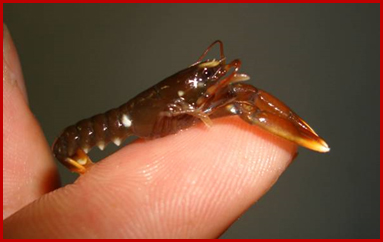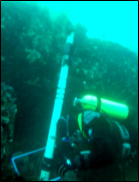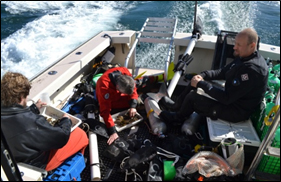


Background
Surveys of the Maine juvenile lobster population were started in the Midcoast region (Zone E) in 1989 by researchers at the University of Maine and the Bigelow Laboratory for Ocean Sciences. In 2000, the settlement surveys were expanded to cover all seven of Maine's lobster management zones in order to create a statewide index of settlement. In 2005, the Maine Department of Marine Resources (DMR) fully took over the monitoring effort in Maine. Settlement surveys using the same methodologies as Maine are conducted throughout New England and Maritime Canada. In 2012 data from these various groups was brought together in a single publicly accessible database called ALSI (American Lobster Settlement Index). This collaborative provides standardization in sampling methods and facilitates data analysis across all sampling programs. Using this type of fishery-independent survey, researchers at the University of Maine and the DMR hope to track juvenile populations and generate predictive models of future landings.
Project Objectives
- Monitor relative abundance of young-of-year lobsters in coastal Maine waters over time.
- Provide an index that can contribute to long-term predictions of future landings.
- Evaluate potential changes in settlement habitat over time.
Study Design
Lobster post-larvae actively select shelter-providing cobble/boulder habitat early in life. This complex habitat is inaccessible to trawl surveys, and alternative survey methods are needed to obtain important fisheries-independent data. Surveys for newly settled lobsters are conducted with SCUBA by pairs of divers operating venturi suction samplers outfitted with mesh collection bags. Each pair of divers haphazardly places a half-meter square quadrat on appropriate cobble substrate. One diver in the pair is responsible for operating the airlift and directing the action of sampling. The second diver aids the first by rolling over large cobble and grabbing any adult lobsters that may try to escape from the quadrat during sampling. Sampling is completed when all movable cobble and boulders have been removed or lifted and suctioned under. The collection bag is changed and the next quadrat is sampled.
Each year during October and November researchers at the DMR visit 40 sites to survey newly settled lobsters. At each site along the coast a minimum of 12 half-meter square quadrats are sampled in this way. All collected material from the quadrats is brought to the surface and sorted. The numbers and sizes of all lobsters and crabs in the sample are recorded.
Below are links to the most recent studies at DMR and the ALSI database.
- 2022 monitoring program update (PDF file, 3 pages)
- Annual reports and more information about the Settlement Index from U. Maine